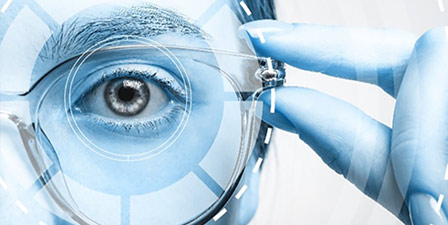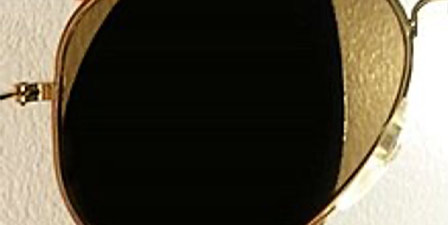Patients come in all different sizes, which can make fitting frames and lenses a dynamic process. Thankfully, the industry has solved many of these problems in a variety of ways.

Frames
From large to small, manufacturers have an array of frames to fit every sized head. Gone are the days of limited styles designed to fit an array of face shapes. Many brands offer a variety of styles, with a select few “large” or “small” fitting frames, such as Prodesign Denmark, Coach and OGI. Other brands specialize at fitting narrow or small faces such as Kate Spade, LuLu Guiness and Kliik Denmark. Similarly, for the stylish gentleman, I recommend brands like Hackett or XXL. Having a variety of different frame sizes ensures your collection includes a frame for every patient need and meets the styles they desire. For the absolute latest in patient customization, read about Barry Santini’s review of Roger Beacon eyewear (http://www.2020mag.com/story/63478) – could this be the future of frames?? Fitting frames can also present a problem for those with wearing hearing aids or those using oxygen therapy. Having an assortment of products to deal with alternative fits can significantly improve patient satisfaction. Examples include cable temples that don’t interfere with hearing aids, and frame lines like the Oxy-View, which discreetly deliver oxygen therapy through the frame to the patient. If you haven’t seen the Oxy-View frame line, they are worth a look.
Lenses
Small or large fitting frames can present their own challenges when fitting lenses. A patient standing 6’5” will spend much more time looking down on the world. This patient might find that a progressive segment height dropped a few millimeters will help when looking around a crowded room, or watching a baseball game from the upper stands.
Similarly, a patient standing 5’1” in a narrow frame with a 22mm B measuring frame will likely require a specialized progressive known as a “short corridor.” This type of progressive lens design is also available from prescription sunglass manufacturers and can provide more of a near vision zone in larger frames.
 The ability to customize a lens for a patient is also a tremendous advantage for those with specific near or intermediate vision needs. Options like the Shamir Autograph series, with fixed or variable progressive corridor designs, allow customization of a lens for the patients’ lifestyle. By customizing the intermediate and near zones of vision, the dispensing optician is tailoring the lenses in the same manner that a suit or dress is tailored. This may help your tall patients choose a large frame to fit their face without sacrificing their visual needs. To ensure that measurements are taken properly, the right measuring equipment is necessary.
The ability to customize a lens for a patient is also a tremendous advantage for those with specific near or intermediate vision needs. Options like the Shamir Autograph series, with fixed or variable progressive corridor designs, allow customization of a lens for the patients’ lifestyle. By customizing the intermediate and near zones of vision, the dispensing optician is tailoring the lenses in the same manner that a suit or dress is tailored. This may help your tall patients choose a large frame to fit their face without sacrificing their visual needs. To ensure that measurements are taken properly, the right measuring equipment is necessary.
Digital Measuring Devices
Last August, I wrote about digital measuring devices in the office. Since then, I have had the opportunity to try the next generation of equipment, and it is COOL! Being able to take such accurate measurements ensures the best position of wear data for customizing lenses. Remember the tall patient described above? And how are their needs different from a patient requiring the use of an alternative mobility device? Pedestal and handheld devices can capture patients’ natural head posture, no matter how they hold their head. New equipment can store measurements for later review in case discrepancies arise in orders – a valuable tool in quality control. Many of these systems have initially high costs, but pay for themselves over time, typically in the form of rebate incentives, and can ultimately save time and money. I encourage you to have a conversation with your lab network to discuss options and what might best fit your practice.
Conclusion
Consumer lifestyle needs have changed dramatically over the last decade. Gone are the days of one-size-fits-most, so why continue to fit patients’ eyewear with this sort of mentality? By diversifying your lens portfolio, frame selection and fitting capabilities, your optical can stand apart from the rest by ensuring that every patient’s visual needs can be met.
 |
Alex Bennett, ABOC. Alex graduated from Colorado State University in 2007 with a degree in Natural Resources Management. He has been an optician since 2008 and currently works in the Denver metro area. Alex is also a contributing blogger for DailyOptician.com and is completing prerequisite courses in order to qualify for optometry school. In his free time, he enjoys running, rock climbing and traveling.












